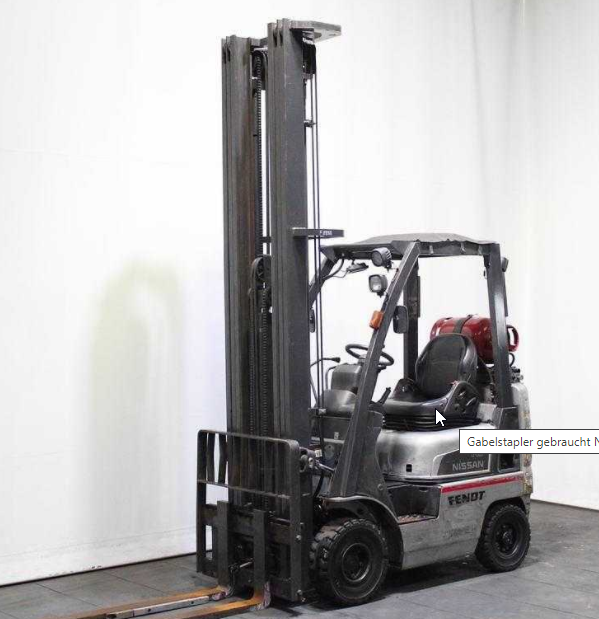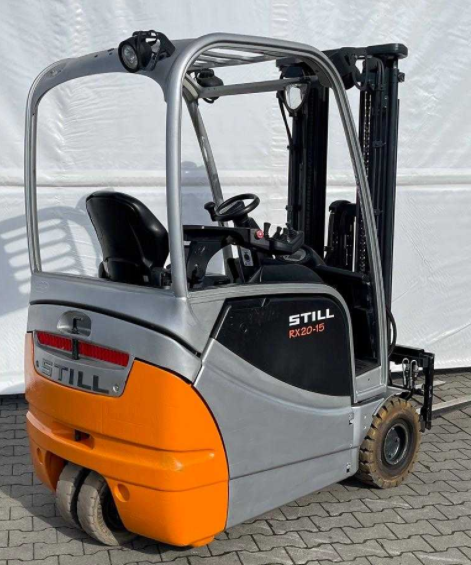Counterbalance trucks - a reliable, all-around choice for logistics
Find out everything you need to know about the most important stacker models, their application fields, and their advantages and disadvantages.

Profile: Indoor and outdoor use (depending on drive type), high handling capacity, long transportation distances, up to approx. 6.5t load capacity and 6m lift height, primarily used to transport pallets - accessories and attachments available for almost any other transported goods.
A classic forklift is also known as a counterbalance truck, and is an all-around choice for almost any logistics application.
The forks are attached to a lift mast, and can be lifted up to 6m from the ground depending on the lifting frame used. Because of this, counterbalance trucks are also known as mast trucks. To ensure easy maneuvering and allow them to drive through warehouse gates, for instance, forklifts have a low overall height, usually below 2m. A simple lift mast (simplex), therefore, can only lift up to this overall height, or approx. 2m. Multi-part lift masts are available to reach higher lift heights, and can be extended to 2 or 3 times the basic mast height. A double mast (duplex) can lift loads up to approx. 4m, and a triple mast (triplex) can lift up to approx. 6m. One important criteria when choosing multi-stage mast trucks is the free lift. The free lift is the lift height that can be reached without extending the lift mast. In models without free lift, the lift mast extends upward slightly even at low lift heights, increasing the overall height of the forklift and requiring sufficient overhead space.
The driver’s seat is located behind the lift mast, so that the driver can monitor the forks and the loading process. The motor and chassis are below the driver’s seat, and serve as a counterweight to the lift mast to prevent the forklift from tipping over when it is carrying a full load. Because of this, front loaders are also known as counterbalance trucks. Depending on the design, the driver may only be protected from falling objects by a safety guard over the seat - however, there are designs with a cabin, or even a fully enclosed, heated driver's cabin for use outdoors or in a refrigerated warehouse.
The chassis of a counterbalance truck is equipped with rear-wheel steering while the two front wheels are fixed. Rear axle steering makes it easier to maneuver the truck in warehouse aisles and to extend the forks into the shelves when stacking pallets. Most forklifts are 4-wheel counterbalance trucks. 4 wheels allow for good driving properties and sufficient stability when maneuvering. However, 3-wheel counterbalance trucks are also available. They have 2 front wheels under the lift mast and one rear wheel arranged at the center. Since they are steered via the center rear wheel, 3-wheel forklifts are extremely agile and can turn almost on the spot. This property is a major advantage particularly in narrow warehouse aisles, although it does result in reduced stability and load capacity. 3-wheel forklifts, therefore, do not achieve the same high load classes as 4-wheel forklifts, and they are also available only with an electric drive.
Another important point is the motor technology used on the counterbalance truck, which impacts its application and operating costs. We can differentiate between electric forklifts and forklifts with a combustion engine. Electrically operated forklifts are emission-free, quiet, and suitable for use in indoor areas, warehouses and high-bay shelving warehouses. The rollers or tires are often not designed for use outdoors, or only on very even ground. Current to supply the electric motor is delivered by a battery that requires regular recharging. The electric forklift will not be available for use while charging, which is an important consideration in shift operations. Counterbalance trucks with combustion engines are primarily either diesel forklifts or gas-powered forklifts. Both variants can be used almost continuously in shift operations. Diesel forklifts are quick to fill up, while gas-powered forklifts are supplied with gas via exchangeable bottles, allowing them to be used without long charging times. Diesel forklifts are very high-powered, and have a higher load capacity than electric or gas-powered forklifts. However, due to the exhaust they produce, they may not be used indoors; only gas or electric drives are permitted in indoor applications.
A wide range of attachments and accessories is available for counterbalance trucks, from forks for pallet transport to clamps, rotary devices, mandrels, and many more attachments that can be mounted to the lift mast to work with many different kinds of goods.
Counterbalance trucks are available from most major forklift manufacturers. You can rent or purchase used counterbalance trucks to meet your needs from Supralift from leading manufacturers like Toyota, Linde, STILL, Jungheinrich, Hyster and Yale.
View used counterbalance trucks here:

View used reach trucks here:
3 wheel front loader4 wheel front loaderDiesel forklift truckElectric forklift truckGas forklift truck